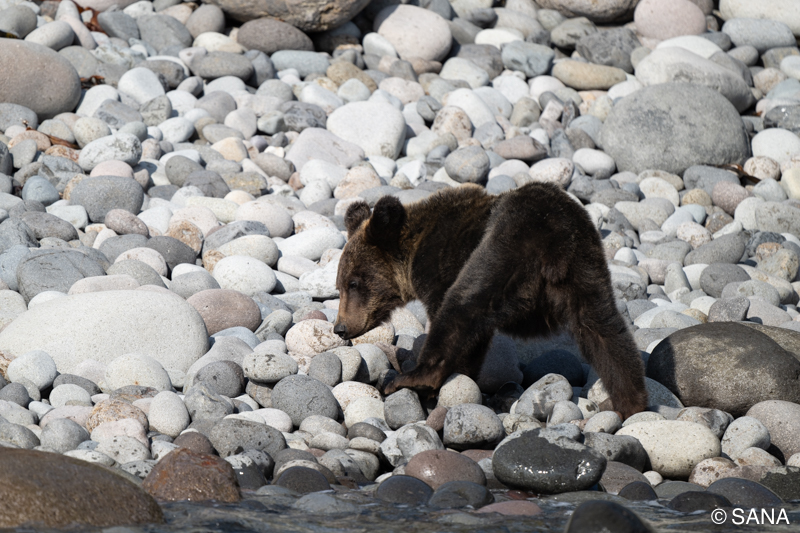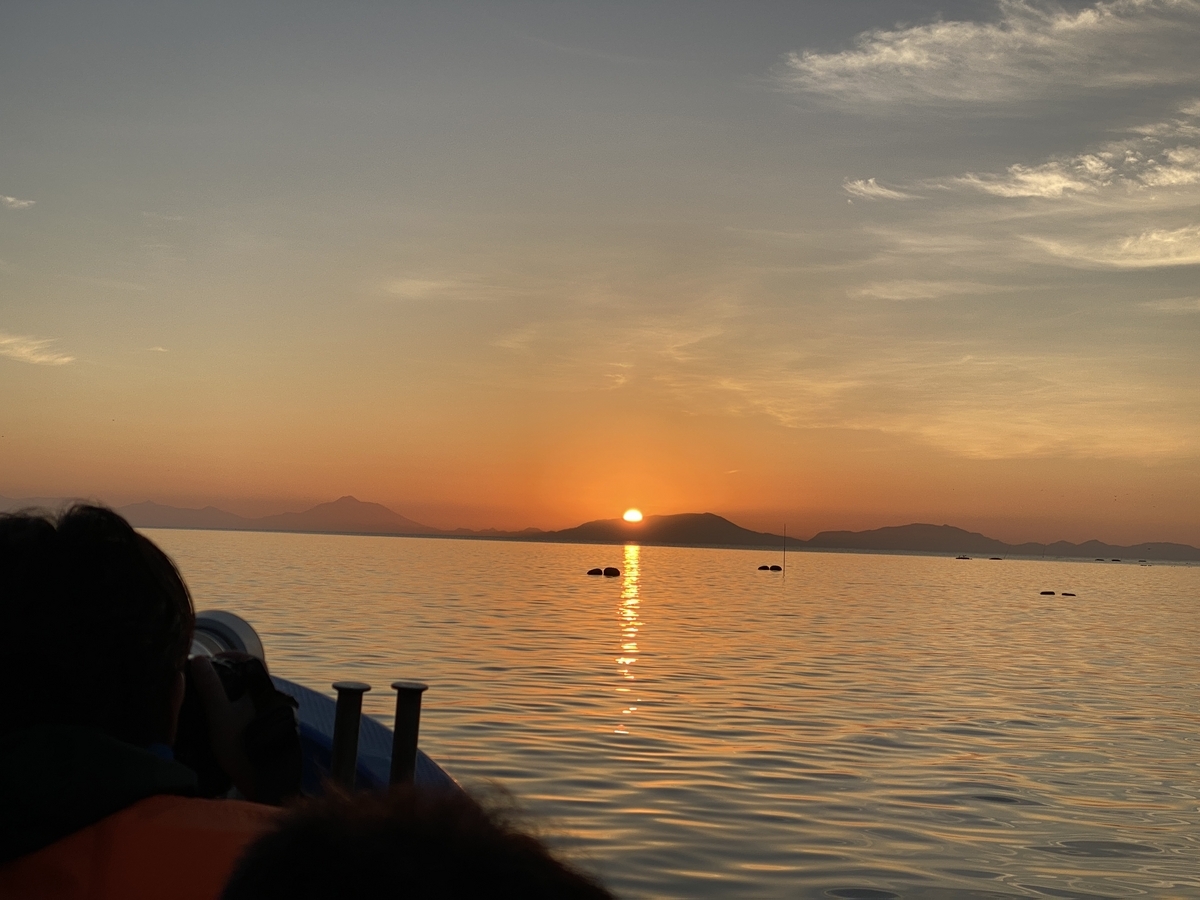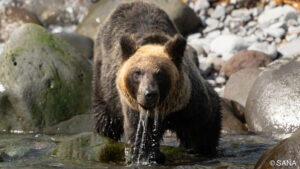On a certain day in September, I stayed at a friend’s house, and this was the day I began photographing wildlife in earnest.
On this day, I decided to participate in the “Shiretoko Cape Brown Bear Boat Cruise” offered by Shiretoko Rausu Lincle Co. (WebSite)

The cruise operated by the company starts at 5:00 a.m. only during the month of September, and I decided to board this cruise to photograph the brown bear.
To get on board this I decided to drive early and head to the meeting place.
This time, however, the inn was in Shari-cho Honcho.
In order to travel through Shari-cho Utoro, then through the Shiretoko Transversal Highway to Rausu, and on to my destination of Aidomari, I needed to leave at 2:00 AM.(I wanted to meet at 4:00 a.m., including preparation, as we had agreed to meet by 4:30 a.m.). However, we had to drive at least two hours from Shari-cho Honcho to the Rausu-cho Aidomari(port) through an area with a lot of wildlife.)

It took longer than expected for me to arrive, so as soon as I got through the registration, it was time to board the boat.


The brown bear is apparently thin.
The veteran photographer next to me said that there was no food in the mountains this year, but that there were many skinny brown bears, as they seemed to be unable to find food due to the large number of deer.
He also said that the population of brown bears has been increasing thanks to conservation efforts, which seems to be one of the reasons for the problem.
It was a very moving experience for me to be able to photograph the bear, but it was also a very thought-provoking few hours aboard the ship.

Although it was frustrating to see the eagle, which was designated a natural monument, I was able to see it, although I was disappointed that it was not firmly in focus.
I took pictures from the boat with a Nikon Z9 and Nikkor z800mm, which was quite difficult due to its weight.
As the boat proceeded, another bear could be seen.

The massive brown bear was not there as it had been seen before.
For a brown bear preparing for hibernation, his emaciated appearance is quite sad.
The food situation in the entire Shiretoko Peninsula may be more serious than we thought.

There was a bear wandering the rocky terrain in search of food, staring at us from time to time.
If this area had been connected to the land, I might have ended up in his belly.
As the boat proceeded further into the interior, there was a point where a large amount of seaweed had been washed up on the shore.
There was another brown bear there.
Apparently he was eating insects under rocks and under seaweed.
Although brown bears are omnivores by nature, it seemed that they could not easily fill their bellies with insects alone, and they seemed to be digging up stones and seaweed to eat insects without paying attention to us.


Unfortunately, I was not able to take pictures of Hokkaido’s typical brown bears eating salmon, but it was a moving few hours to see so many of them up close.
At the same time, however, it was a day of wondering what was happening in Shiretoko, a World Natural Heritage site.
We returned to the port around 10:00 a.m. and decided to take a short nap before returning to our inn.
To be continued.








